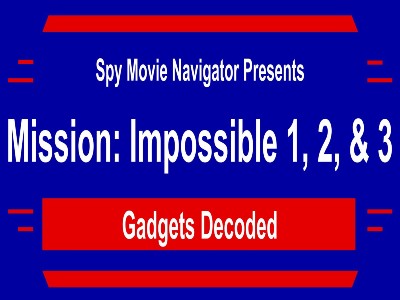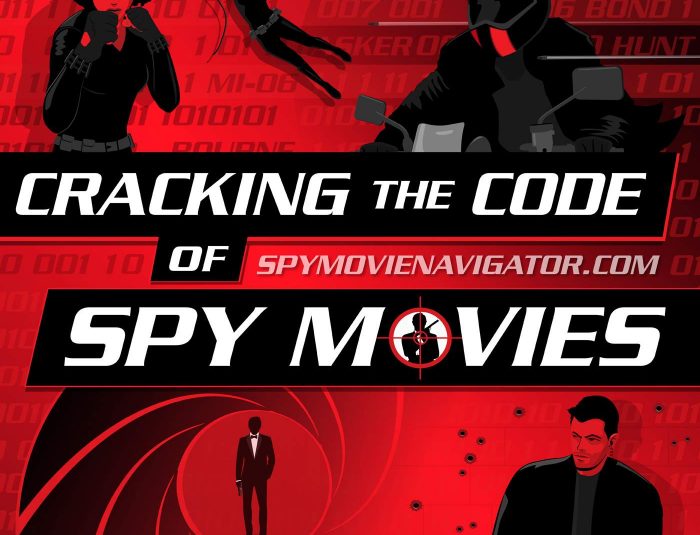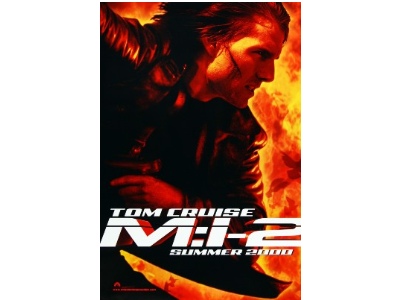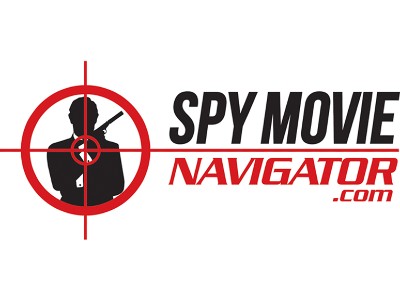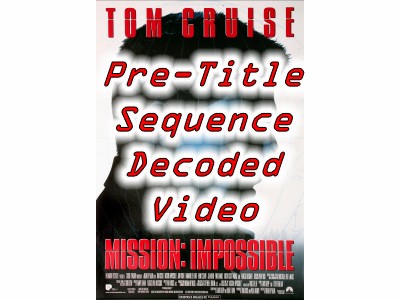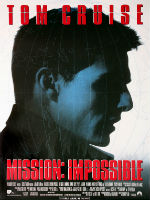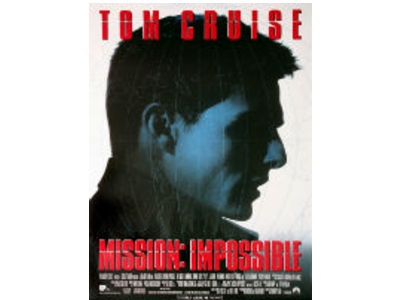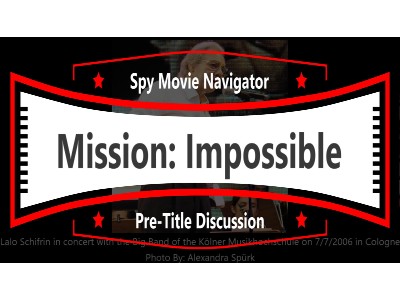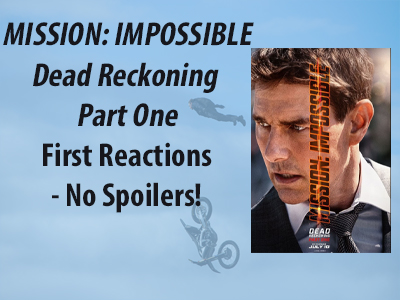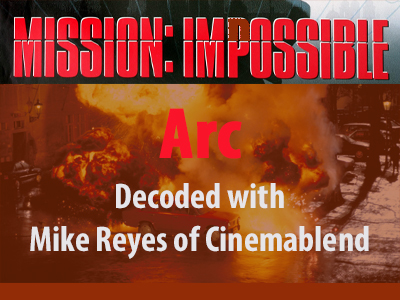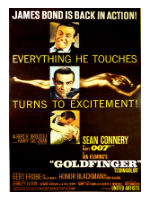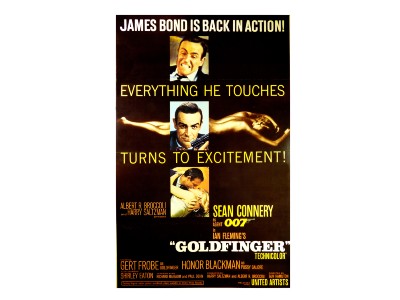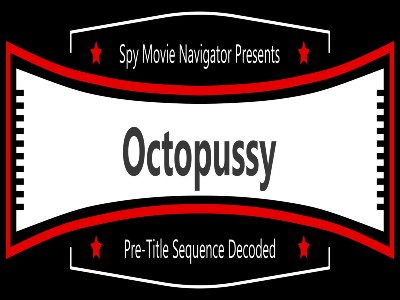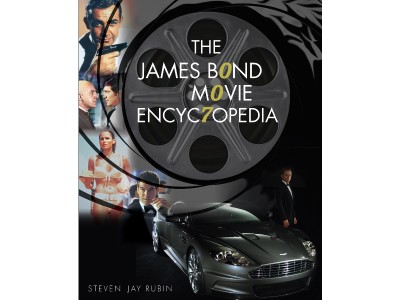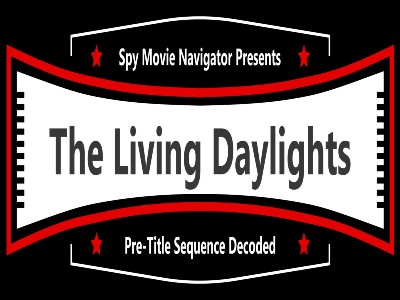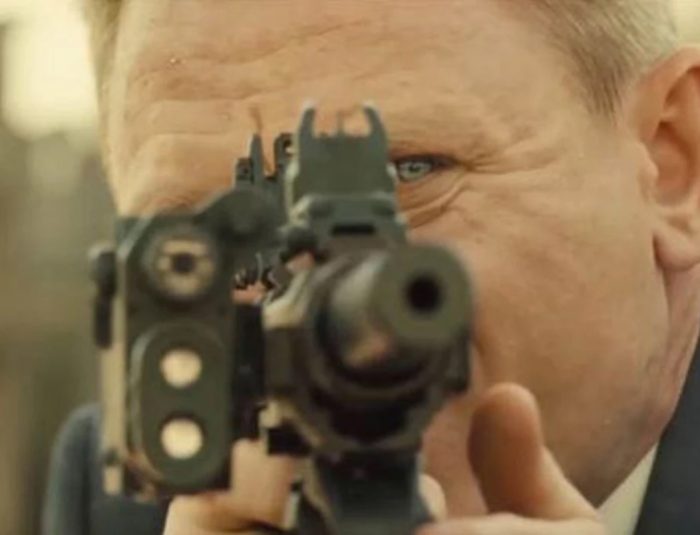Mission: Impossible, taking a television series to the big screen
This transcript is a subset of what is in the podcast. We recommend you listen to the podcast.
Is it an Impossible Task to bring a successful tv show to the movies? Come with us as we dissect the first Mission: Impossible movie. This is Dan Silvestri and Tom Pizzato with SpyMovieNavigator.com. the worldwide community of spy movie fans. Spy Movie podcasts, videos and more.
Podcast Opening
For today’s podcast, we are going to discuss the first Mission: Impossible movie. We will use the name Mission: Impossible 1 or MI1 to refer to this even though it technically doesn’t have a number associated with it. However, MI 2 and MI 3 did have the number attached so we’ll use a 1 for clarity.
For the most part, Spy Movies have had their origin from books: James Bond, Bourne Identity, Tom Clancy’s Jack Ryan stories, John Le Carre’s books, etc. However, in 1996, Paramount Pictures and Cruise/Wagner Productions released the first movie of the Mission: Impossible series, based on the tv show. Other spy-based tv shows wouldn’t get their US big-screen debuts until years later (namely I Spy in 2002 and Get Smart in 2008). (even the Man From U.N.C.L.E. in 2013)
The TV show of “Mission: Impossible” ran for 7 seasons (1966-1973) in the US. This was back when there were 27 episodes in a season, not counting the pilot in season one. The show won 19 awards and was nominated for 39. There was also a two-season reboot of the show in 1988-1990. All totaled, there were over 200 episodes of the show.
So, how do you bring such a successful TV show to the Big Screen? One answer to this question was to bring in one of the biggest box office names in Tom Cruise to play the lead character and add a lot of very cool stunt work, Brian DePalma to direct, and keep Lalo Schifrin’s theme song.
Pre-Title Sequence
Let’s start with MI1’s pre-title sequence: The first thing to notice that there is a pre-title sequence. The James Bond series of films made the pre-title sequence a mainstay of spy movies. Most spy and action movies today include pre-title sequences.
In, Mission: Impossible 1, the movie opens with the IMF team (Impossible Mission Force) trying to obtain the name of a contact in Minsk (Dimitri Miediev) from a Russian. We don’t know at first who any of the people in the room are and no names are used. We don’t know why they want the name. It is irrelevant as it has almost nothing to do with the rest of the plot. This scene really sets up the film for the tv fans as it answers one of the concerns they would have: How much will this feel like the tv show?
This scene does have a similarity to The Godfather: Part II. In The Godfather: Part II, Senator Pat Geary wakes up next to a dead woman. He can’t remember what happened “I don’t know how it happened … I passed out”. He had been set up and was framed. He hadn’t really killed her. In the Mission: Impossible pre-title sequence, the Russian has a similar situation. There appears to be a dead woman and he is saying he doesn’t know what happened. I got this information from this clip.
This pre-title sequence does set up one plot point in the movie. Jim Phelps is not on this mission. We find out later he was in Chicago at the Drake Hotel for a meeting. This becomes important later and isn’t highlighted in the pre-title sequence.
Two minutes into the scene, the guy who asked the questions and kills the Russian, walks over to the anteroom and REMOVES HIS MASK, revealing agent Ethan Hunt (Tom Cruise). Yes, the masks are there, the tv fans can feel at home.
One of the goals of the first Mission: Impossible 1 movie, had to be to show the TV show fans that the movie should feel that it is really based on the “Mission: Impossible” television show as they remember. The pre-title and title sequences meet this goal. If a viewer hadn’t seen the TV show, it’s not a big deal, but a few very important things come out of the first six minutes of the movie that the tv fans expect to see. In future Mission: Impossible movies, the pre-title sequences do set up the rest of the movie.
The Bourne series handles things a bit differently. The title in all the movies is a simple title. The title pops up by itself and no other credits are given until the end of each movie. In The Bourne Identity, the pre-title sequence starts with Jason Bourne floating in the water. He is picked up by someone on a fishing boat. This is followed by the title appearing at about 1:44. The Bourne Ultimatum has the simple title at about 3:50 into the movie. The Bourne Supremacy starts with the simple title to open so it doesn’t have a pre-title sequence. The Bourne Legacy has the simple title at about 2:00 into the movie. Jason Bourne does not have a pre-title sequence. It starts with the title and jumps right into the movie.
So it looks like the Bourne movies don’t have pre-title, but Mission: Impossible and James Bond do. So Tom: Is Bond the first movie with a pre-titles? The first example of a pre-title sequence we have found was in the 1930’s movie Viennese Nights. The sequence is of a Biergarten and a song is being sung. This is a very short scene that is immediately followed by the title sequence. So, from what we’ve found, this one wins the discussion.
However, different sources give different answers to the question of ‘what is the first movie with a pre-title sequence?’ Is the Biergarten scene really a pre-title sequence? The Guinness Book of Film Facts and Feats (Second Edition) says it is the 1939 movie Destry Rides Again. Other places have answered the 1930 movie Viennese Nights, the 1934 movie Crime of Passion or the 1941 movie The Wolf Man.
We’ll have a podcast devoted to examining pre-title sequences.
The Use of Masks
Another thing the pre-title gives us is the use of a mask as a disguise. Growing up, the television show “Mission: Impossible” was my first exposure to using masks as a disguise. However, the concept was not new when the TV show debuted. In our research, there are numerous examples of shows that predated “Mission: Impossible” with using the mask. Masks have historically been used mainly for two purposes in the movies:
- Cover some sort of disfigurement (like in The Phantom of the Opera or Mystery of the Wax Museum).
- To deceive someone into believing a person is someone else (like in Star of Midnight, Peter Gunn, From Russia With Love, and The List of Adrian Messenger)
Obviously, Mission: Impossible uses the second approach.
We will provide a more thorough examination of the use of masks in movies and television in a future podcast on the topic.
Title Sequence
This mask scene spills into the title sequence. The title appears to be designed to further hook the tv show fans. First, there is Lalo Schifrin’s wonderful “Mission: Impossible Theme” song and the lit fuse which instantly brings the viewer back to the TV series. Lalo’s awesome theme: It’s back.
The next part of the title sequence keeps the nostalgia going. As the music plays and the opening title credits are shown, snippets from the rest of the movie are shown. This lets us in on who some of the characters we will see are, as well as giving us a glimpse of some of the upcoming action. Not too much, just a tease. The TV series did this as well in its opening titles. It’s a nice touch they carried over for this movie but unfortunately didn’t carry it over to Mission: Impossible II and Mission: Impossible III. We wonder why they didn’t, but they brought it back starting with Mission: Impossible – Ghost Protocol.
One thing about the snippets that hits home for me is how it feels like an overture to the movie, much like a Broadway musical usually has an overture to get you familiar with the music and make you want to hear more. This title sequence gives the audience a taste and makes us want more.
Mission Briefing
There are a few nuggets for the tv fan here as well:
First, we get the recording that explains the mission.
Second, we are reintroduced to Jim Phelps, the only character returning from the television show. Peter Graves played him in the TV series. In this movie, he is played by John Voight. He is the character who quarterbacks the mission. Peter Graves was asked to do a cameo in the first movie but declined after finding out what they do to his character in the movie. We’ll talk about that with the clip of Jim Phelps and Ethan at the restaurant.
Finally, we get the description of the mission, the team gets identified, and “Your mission Jim, should you choose to accept it”/“As always, should you or any member of your IM Force be caught or killed, the Secretary will disavow all knowledge of your actions”/” This tape will self-destruct in 5 seconds” are all brought forward for the Mission: Impossible fan. Yes, Yes, and Yes. They have the taped mission that self-destructs, they have the “your mission should you choose to accept it”, and the disavowed message. This movie feels like it is on the right track. In the television show, there was the Tape Scene (“Your mission should you choose to accept it”) followed by the Dossier Sequence (putting the team together in the first 2 seasons). These are combined in the movie with the assignment and team designation all in one tape.
The good part about the pre-title sequence, titles, and mission briefing is that if you remember the tv show, you’ll feel nostalgic. However, if you don’t know the tv show, you are still getting what you need to know as these sequences set the movie plot very well.
Two little fun facts regarding the heritage of parts of this revolve around the “This tape will self-destruct” and “the Secretary will disavow …” phrases:
In the “Mission: Impossible” television series and movie the phrase “This tape will self-destruct” is used after the mission is described. The television show debuted in 1966. In the 1962 movie, Dr. No, M tells James Bond says, “I’ll have a set of background papers to date delivered to you at the airport in a self-destructor bag”. This is the first discussion we’ve found in a spy movie about self-destructing background material. We aren’t positive Mission: Impossible took this and ran with it or it is just a coincidence.
There is also the phrase: “should you or any member of your IM Force be caught or killed, the Secretary will disavow any knowledge of your action”. This concept appears to be an adaptation of something that happened in an earlier spy movie. The 1959 movie, called Operation Amsterdam is based on a true story, where the leader who is sending three men out on this mission says: “Incidentally… if you’re caught… we cannot help you.” They were to get the industrial diamonds out of Holland before the Germans could get them and build more tanks and planes and machinery.
So, the self-destructor bag from Dr. No and “Incidentally… if you’re caught…” came from earlier movies and were enhanced in Mission: Impossible. We will see this played out again in the vault scene later in the movie.
And one more fun fact: The lighter that Jim uses on the plane when he gets the mission is a Dunhill Rollagas which is a lighter used in many James Bond films. It’s the same brand of lighter as the one 007 gets as a gift from Della and Felix in Licence to Kill.
Apartment Sequence
In the Television show, there is a scene which shows “The Plan” which is created in a safe house. This second half of this mission briefing scene assigns tasks to the team members. This is a common scene in the television show. In the movie version, this scene pretty much follows the format of the television series. Jim Phelps explains the first mission to the team. However, in the television show, Jim picked his team. In this movie, the team is assigned to Jim.
Jack Harmon and the Gadgets
At about 9 minutes into the movie, Jack Harmon shows Sarah Davies the glasses with the camera embedded in the frame. Jack is the guy who can “hack into any security system” according to the Mission Briefing. At about 10 minutes, 18 seconds is a 20-second piece which shows Jack giving Ethan the explosive red/green gum. He is uncredited and is played by Emilio Estevez.
Jack’s role is like that of Q from the James Bond films and Barney Collier from the Mission: Impossible television show. He’s the gadget guy. He seems to me to be closer to the type of Q as Ben Whishaw plays in Skyfall and Spectre, rather than Desmond Llewelyn’s version in 17 of the earlier Bond films. With both Whishaw’s Q and Emilio Estevez’s Jack Harmon, only a few gadgets are used, but they always seem to be just what’s needed for key parts of the mission. Desmond’s Q seemed to have a gadget for everything. One difference, however, is that Ben is more about the business and relatively serious most times. Jack likes to crack jokes. I can’t imagine either Ben or Desmonds’ Q saying “Hasta lasagna, don’t get any on ya” as Jack does.
First Mission
The first mission, as explained by the briefing is to get the NOC (Non-Official Cover) list from Golitsyn. From the movie: “we photograph Golitsyn stealing the NOC list, follow him to his buyer, apprehend both of them”.
One interesting tidbit may tie the 1996 movie Mission: Impossible with The List of Adrian Messenger other than how the masks are used. In the movie Mission: Impossible, the voice on the mission briefing tape tells the team their mission is to arrest Alexander Golitsyn. Golitsyn supposedly sold half of the NOC list and plans to steal the other half. The NOC (Non-Official Cover list has agents’ real names with their code names. Golitsyn’s name appears to be an homage to one of two people: the famed art director, Alexander Golitzen or the Soviet KGB defector Anatoliy Golitsyn. We’ve been unable to confirm which one. Among Mr. Golitzen’s 336 credits in IMDB, is the 1963 movie The List of Adrian Messenger, the movie with all the masks. Although his immediate family took the spelling Golitzen (note the ‘e’), his family name is originally spelled Golitsyn, the same as the movie character is spelled in the credits. The Golitsyn family has royal roots in Russia back to the 1600s. Anatoli Golitsyn defected from Russia in 1961 and wrote two books on KGB leadership practices.
This scene starts at the Embassy in Prague at a party. Ethan Hunt poses as US Senator John Waltzer, chair of the US Armed Services. He has a mask to make him look like the senator.
The mission starts out fine but goes bad fast. Ethan Hunt and Sarah Davies get the picture of Golitsyn stealing the NOC list. Things start to go bad as Jack Harmon struggles to get the systems working. In fact, he has such troubles that he ends up dying from an elevator gone rogue. Jim Phelps tells the team that someone is on to them and to abort the mission. He runs across the bridge, gets shot and falls in the water. The rest of Ethan’s team gets killed, except for Ethan Hunt and Claire. At least that’s what we are led to believe. However, later we find out that Jim Phelps survived too.
One nice touch is that Jack Harmon has been billed as a guy who can hack into any system. I’ve spent 30 years in the Information Technology field and I hate it when a movie has someone hack into anything in 2 seconds and never have any problems. Jack struggles, in part due to Jim’s efforts, but this would be closer to reality than we normally see in movies.
This scene shows us the mission as it goes awry. We find out what happened later, but the technique used here is to fool the audience (and the IMF team) and make them think they are seeing one thing while another thing is happening.
The “Mission: Impossible” television show relied on confidence games. The original production team members were big fans of the book “The Big Con” and the movie The Sting. The characters in the show and the person reading or watching would get fooled into believing they were seeing one thing and really another thing was going on. The television show used that technique often. This mission is one of those scenarios as we will discuss in the Restaurant Scene discussion.
Restaurant Scene
In the television series, it was not uncommon for IMF agents to turn to the other side and go bad. The main plot of each show was generally to catch these turncoats. This definitely gets carried over into the movie.
In this scene, Ethan Hunt (Tom Cruise) meets with Kittridge (Henry Czerny) at the Akvárium restaurant after the failed mission. Kittridge lets Ethan Hunt know that the mission was really a decoy. There was a suspicion that one of the agents had turned to the other side. The mission really was a set-up with another IMF team monitoring Jim Phelps’ team. Ethan Hunt called it a Mole Hunt.
The CIA had intercepted a message from someone named Max who wanted to buy the NOC List from the turned agent. Max called it Job 314. Job 314 ended up being the attempted stealing of the NOC List in the first mission in the film. Kittridge tells Ethan that he is the prime suspect with the words: “and like you said, you survived”. Ethan freaks out and uses the only gadget he got from Jack Harmon to escape the restaurant.
The gadget Ethan uses is an explosive device that he throws onto a very large aquarium. This is scene is very well-done ending with the aquarium exploding and the contents flood the area as Ethan escapes. There is a mix of reality and some CGI but it is handled well.
The use of exploding or crashing aquariums is not new. Examples of this can be found in many films that predate Mission: Impossible. In James Bond’s Octopussy, around the 1:19:12, Bond disposes of the chainsaw henchman by crashing his head into a fish tank (https://www.youtube.com/watch?v=jF5_WqbTmW8),). In License to Kill, a guard shoots the fish tank, Bond uses this to help get the upper hand in this fight. At about 50 seconds into this clip: https://www.youtube.com/watch?v=kmqtWW1U3iM. The films Lethal Weapon 2, Duece Bigalow: Male Gigalow, Total Recall, Push, Eraser, Jackie Chan’s First Strike, and A Low-Down Dirty Shame all have scenes where aquariums are destroyed as part of the plot. One interesting curiosity is that Mission: Impossible 1, Eraser and Jackie Chan’s First Strike were all released in the same year (1996), making this a very bad year for aquariums.
Finding Max
After the meeting with Kittridge, Ethan decides that he really must steal the NOC List in order to catch Max and hopefully figure out who the turned agent is. Therefore, he must find Max. When he is trying to find Max online, Ethan comes to the realization that Job 314 is really JOB 3:14 from the Bible. He sees a Bible in the safe house and reads JOB 3:14. He uses this to track Max online and sets up a meeting.
It is a bit funny to watch this scene 20 years after the movie’s release. The searches that Ethan does are quite comical by today’s standards. Most of this film holds up over time, but this scene really shows its age. In fact, the email address Ethan uses isn’t even technically possible to use.
Meeting with Max
In their first meeting (https://www.youtube.com/watch?v=UTHVmd87QrY ), Ethan tells Max that he is going to steal the NOC list and wants to be paid for it. Although he is really going to steal the NOC List, this is only a setup so that he can catch whoever the turncoat agent is. He warns Max that the disc she got from the first mission was likely booby-trapped to let the CIA know the location of whoever tried to load the data file. Max doesn’t believe him, but the CIA shows up and Max, her team, and Ethan barely get away. This sets up the trust between Max and Ethan.
The NOC list heist
Although Mission: Impossible is a spy movie, 11 and a half minutes of it are a heist.
The NOC List is a file on a computer at CIA Headquarters in Langley, Virginia. The room or vault where the computer lives is very heavily protected (sound, touch, temperature sensors) which requires a gutsy heist in order to get the file. They decide that the only way to get to the computer with the file is to enter the vault from above. They’ll have Ethan lowered into the vault without him touching anything, except the keyboard. Tom Cruise does this scene himself and is my favorite scene in the movie. It even has the “oops, I almost fell” part where Kreiger lets the rope slip. Ethan almost hits the ground. I can’t think of a movie that has a high-tension scene like this one that doesn’t have the “we almost blew it” part added to it.
This scene is obviously modeled after the work of Jules Dassin. Dassin was the director of the 1964 heist movie, Topkapi. He received two Academy Award nominations for this movie and Peter Ustinov won the Best Supporting Actor Oscar. Jules also directed the 1955 heist movie Rififi (He won Best Director at the 1955 Cannes Film Festival for this movie). The heist scenes in these two movies have key ideas that are used in the heist in Mission: Impossible 1. All 3 movies have lengthy planning discussions around how to deal with the alarm and how sensitive the room is to sound, and the floor is to touch in the case of Topkapi and Mission: Impossible 1. All 3 of the heists have the robbers coming into the area from the ceiling.
Prior to the release of Rififi, Jules Dassin got tangled up in the Hollywood Blacklist in the late 40s and 50s.
One of the most noticeable ideas used in all 3 movies is the lack of a score and almost total silence during the 3 heists.
In Rififi, the robber climbs down a rope into the area to be robbed. The heist takes up almost 30 minutes of movie time and not a word is spoken, nor is a score played. There are whatever natural noises appearing in terms of footsteps and the like. However, this scene is extremely quiet. This really added to the tension of the scene. It also caused some buzz when the movie was released as it was a very novel way to put a scene like that together. Who has silence for almost 30 minutes in a non-silent movie? And it works…wonderfully.
Topkapi’s heist, on the other hand, is mostly silent, but there is some brief dialogue between the robbers. Again, there is no score. In the Mission: Impossible 1 heist, there is more background noise in the scenes interspersed with William Donloe’s “stomach problems”. However, in the vault itself, there is very little dialogue and noise.
The other key elements from Topkapi’s heist have to do with how they enter the robbery area. In Topkapi, the robber (Giulio played by Gilles Ségal) is lowered headfirst from the ceiling using ropes. In Mission: Impossible 1, Ethan is lowered in headfirst via cable. In both Topkapi and Mission: Impossible 1 the robber then spins and goes from head-first to a horizontal suspension in the air. Both movies also have the rope slip and the robber just misses hitting the floor, which would sound the alarms. In Topkapi, Giulio has a very large light attached to his head. In Mission: Impossible 1, Ethan has a much smaller light attached to his head. After seeing the light in Mission: Impossible 1 it is almost comical to see the huge light in Topkapi. It just goes to show how technology changes in a 25-year timespan.
Figuring it out
After the heist in Langley, Ethan sees that the Bible he used in the safe house was stamped “PLACED BY THE GIDEONS IN THE DRAKE HOTEL CHICAGO” (at 1:15:40 in the film). This is where he figures out what really happened and that Jim Phelps is the turncoat. In the Apartment Sequence earlier in the film, Ethan Hunt tells Jim Phelps that they missed him in Kiev, and Jack Harmon asks, “were you on some cushy recruiting assignment again?” When Ethan asks, “Where did they put you up this time, The Plaza?” Jim answers, “The Drake Hotel. Chicago.” Ah, yes, “24-hour room service, chauffeured cars . . .”. It seems like a little background info for us as to the fact the team has been in Kiev, Jim was not, and Jim was in Chicago at The Drake Hotel. Ethan figured that if Jim was looking at the Bible from the Drake Hotel, it was to communicate with Max. This comes out in the scene with Jim and Ethan at the restaurant.
The Drake Hotel
Now, The Drake Hotel does not appear in the movie– no shots of the Drake actually appear in the movie. The Drake Hotel in Chicago is an outstanding hotel, and many dignitaries from US Presidents to foreign dignitaries have stayed there, so it is a classy and classic hotel. Princess Diana, Cary Grant, Grace Kelly, Joe Dimaggio and Marilyn Monroe (both of whose initials carved in the bar in the Cape Cod Room were still there until the restaurant closed in 2017), When Prohibition ended, The Coq d’Or (on-premises) served the second drink in Chicago at 8:30 PM on Wednesday, December 6, 1933.
But even though it is never shown in the movie, this is one hotel that has a huge impact on the movie and the entire storyline! Do you remember Ethan Hunt discovers the Job 314 actually refers to the Bible, Job, Chapter 3 Verse 14? And when he finds the Bible in Jim’s possessions, he opens it and sees that it on the left-hand inner page it is stamped: “Placed By the Gideons in The Drake Hotel Chicago.” This draws Ethan into thinking that perhaps the mole is Jim, and this piece of spy work forever changes the outcome of the story. So, for a hotel whose image never appears in the movie, it has a huge impact on the movie until the end.
We thought it would be good to take a visit to the hotel in Chicago and see what this place is all about since it played such a prominent role in the movie while never actually appearing in it.
The exterior of the building is refined 1920s elegance. On the corner of Michigan Avenue (The Magnificent Mile) and Walton Street, not far from the famed Lake Shore Drive, The Drake stands as an iconic high-end offering, with three restaurants, a bar and more.
An interesting fact about the bible can be seen when Ethan Hunt finds the Bible stamped with The Drake Hotel Chicago in it. You can barely make out on the right-hand page, second paragraph words that look like “NEW. International” referring to the version of the Bible. So, we think the Bible is just a prop because the Gideons do not distribute the NEW International Version of the Bible. We called them and asked! They distribute only the King James Version or the English Standard Version.
We tried to take a look at a real Drake Hotel Bible, but they did not have one we could look at.
So, The Drake Hotel provides THE clue in Mission: Impossible 1 yet the building never makes a screen appearance! All this makes Ethan Hunt ask, “Why Jim? Why?”
Restaurant with Jim Phelps
Jim Phelps tracks down Ethan and has a discussion in a restaurant explaining that Kittridge was really the mole. While he talks through how Kittridge did it, clips are shown with what really happened. This is where the audience sees that Jim was really the mole. Ethan plays along, even though he knows Jim is the mole. He lets Jim explain why someone would become a mole and doesn’t let Jim know that Ethan is on to him.
As we’ve discussed elsewhere, there definitely was an attempt to pull the television show fans into this movie. However, when I saw this in the theater, this scene really made me mad. I was very mad that Jim was the bad guy and had turned. Yes, in the television show, many of the bad guys were agents, but Jim was always the good guy. Why would you bring his character back into this movie only to make him the bad guy? It made the twist very effective but really made me mad.
Train Scenes
After Ethan gets the NOC List, he needs to meet with Max and the mole so they can catch the mole (Jim Phelps). This second meeting with Max happens on a high-speed train that is to cross the English Channel. The train provides three scenes that are really the climax of the movie.
The first scene has Ethan providing the NOC list to Max. Max had paid Ethan for the NOC List and wanted to upload it. Luther uses an electronic jamming device to keep Max from uploading the file before they hit the Chunnel. Given that this was filmed in 1996 and that they were on a moving train, one can imagine how slow the phone line was that Max was trying to use.
The next scene is where it gets really fun. Claire walks into the luggage room on the train and sees Jim. She talks with Jim about how he is the mole and how they will set up Ethan and take the money. At this point, Jim stands up and PULLS OFF A MASK. In reality, she had been talking with Ethan. Ethan had made Claire believe he was Jim with the use of the mask. Then the real Jim walks out from behind another section of the luggage car. Ethan gives her the money and then puts on a pair of glasses with a camera built-in, letting Jim know that Kittridge has seen that he was still alive. Jim then kills Claire and has a quick fight with Ethan before escaping out of the
The climax of the movie occurs on the outside of the train. This is a fantastic use of CGI and real footage. In this scene, Jim is trying to escape to a helicopter piloted by Krieger. It has some exciting footage of the helicopter attached to the train and the action continues into the tunnel. It is hard to believe that in reality, the helicopter would have been able to fly like that in a tunnel, but it makes for some great drama.
The final shot of this scene is of the train conductor, brilliantly played by David Schneider, looking up after the train stops and then he faints. The look on his face says it all. There are some reviews I’ve read saying that this was the worst piece of the movie. However, David’s look worked for me.
Trains are used a lot in movies as they are a confined space with no easy escape (maybe except for Silver Streak). A few movies keep the action inside the train. For instance, in James Bond’s From Russia With Love, there is a tremendous fight scene between Bond and Red Grant. That scene happens inside the train. Skyfall has a nice exterior fight scene. The Wolverine has something somewhat similar (ok there is no helicopter) using a bullet train with Wolverine on top of the train in a fight with Yakuza. From what we’ve been able to find, the 1926 Buster Keaton film The General and 1929 movie The Flying Scotsman were the first movies to show action with a person on the outside of a moving train.
The Ending
The movie wraps with Kittridge talking with Max and letting her know that she isn’t going to be arrested. They really wanted Jim. Luther and Ethan have a quick chat talking about moving forward. Finally, Ethan is on the plane. The flight attendant asks him the same question that they asked Jim before he got the taped mission at the beginning of the movie: “Excuse me, Mr. Hunt, would you like to watch a movie”. He is going to get his next assignment.
This scene confused me. In the discussion with Luther, Ethan said he was done and not going to go back to the IMF. Then, on his flight, he gets his next assignment. Is this a continuity error or is it like in The Godfather 3: “Just when I thought I was out, they pulled me back in”? Fortunately, he does go back letting the film series continue.
In the Bond series, James Bond usually gets a bit of time off after a mission. It looks like Ethan Hunt gets to jump from one mission to the next.
